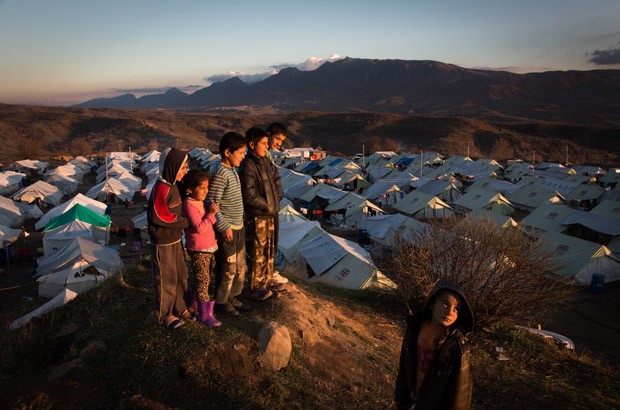Yemen. Gaza. Iraq. Ukraine. And looking back a little further: South Sudan. Syria. Central African Republic. We are in a world where huge catastrophes have almost become commonplace.
We see how eruptions of violence can bubble out of control and spread over vast distances in no time at all. How the motives that originally drive people to take up arms become subsumed by a myriad of other interests, as more armed groups join the fray, making the resolution of conflicts ever more difficult.
Faced with this state of fragmentation and of confusion, the community of states seems to have elected collectively, if not explicitly, to hunker down and try to contain the fallout of the world's worst conflicts, rather than tackle their root causes.

As humanitarians, we try to operate on the basis of connections. We use connectivity to maintain our access to people and our connection to individuals and communities. We do this, in order that we might provide some measure of pain relief for the suffering of ordinary people, even if we cannot provide the antidote. But how?
Just as armed conflict and violence have no single cause, so there is no single or perfect humanitarian response.
In some situations, local and national governments are able to work together alongside humanitarian organisations to good effect. For instance, following April’s devastating earthquake in Nepal, aid agencies worked with partners in government to try to get aid through to where it was needed. But what about where the government is overwhelmed and cannot cope or where the state’s authority is challenged by a non-state group?
Traditionally, development organisations have worked in sync with the humanitarian agenda by supporting governments over the long term. This support has been in areas such as education and health and has helped build the resilience of people to better withstand crises.
But when crises do strike, what happens if the government does not have even nominal control over parts of its territory? Or if the people in a region are neglected by the government because they are seen as being supportive of opposition groups?
How do we help these people meet even their most basic needs?
First, we must focus more on empowering and strengthening local organisations which have the ability to go where others cannot. The power of such informal aid networks, often led by people from the diaspora, is often underestimated. Their strength lies in their ability to exploit local knowledge and contacts in a way that international agencies and centrally-coordinated systems cannot hope to emulate.
Like water flowing over a flat surface, these networks permit lifesaving aid to trickle into the cracks and holes to reach, if not all those who need it, then vastly more than could be helped otherwise. In Syria, for example, these networks provide the majority of aid.
Second, we need to ensure that where there is a conflict of interest between the political goals of one party and the basic needs of the people, that the former must never be allowed to win out. To achieve this we need to make sure that a radically independent, impartial body with the ability to talk to everyone, states and non-state groups alike – a body such as the one I am proud to lead, the ICRC - has the capacity to step up and bring help to all who need it without fear or favour.
And we are ready to step up to fill the gaps. Gaps which we see every day from our often lonely vantage point in Yemen, in Nigeria, in South Sudan and in Syria. But we and our national Red Cross and Red Crescent society partners need support to do so and we count on partners like DFID to help us.

We also know from bitter experience that the new crises erupting today are not likely to abate any time soon. Take Afghanistan, where we have been for nearly 30 years, and the Israeli-Palestinian conflict, the consequences of which we have responding to for even longer.
To respond effectively, we also need to be able to plan ahead. In order to do that, we recognise that we need to blend principle - the absolute necessity of staying agile, relevant and focused on emergency aid - with pragmatism, knowing that responding effectively to conflicts requires building long term strategies. In this, we also look to DFID to lend us their expertise and support to help us look around corners on behalf of those we serve.
The countdown has begun to September’s summit on the Sustainable Development Goals (SDGs), and to next May’s World Humanitarian Summit where the humanitarian sector has the potential to make a step change. The debate on how best to support a society mired in conflict or disaster, which often pits humanitarian and development objectives against each other, will soon come to a head.
We will be watching with interest.

Recent Comments